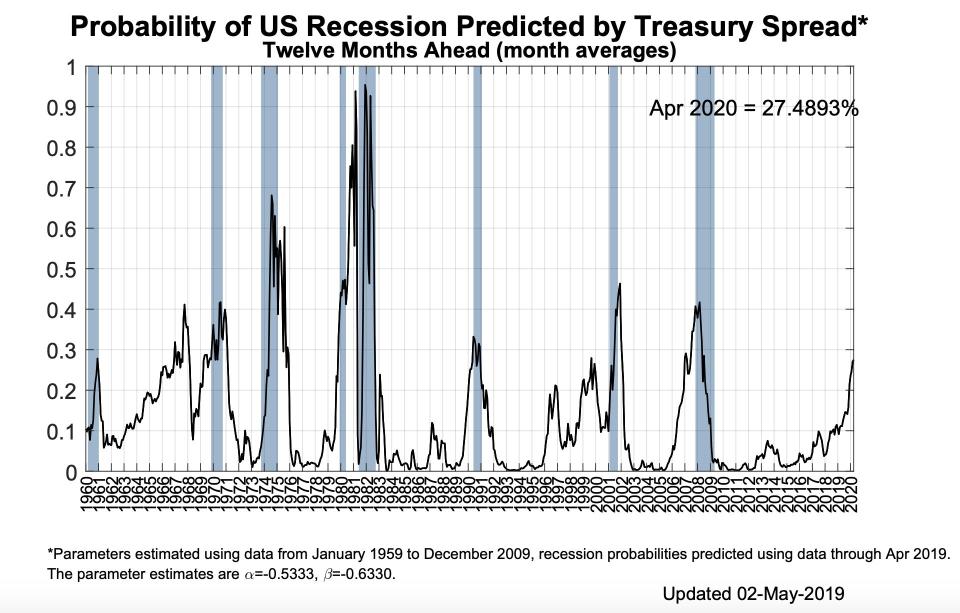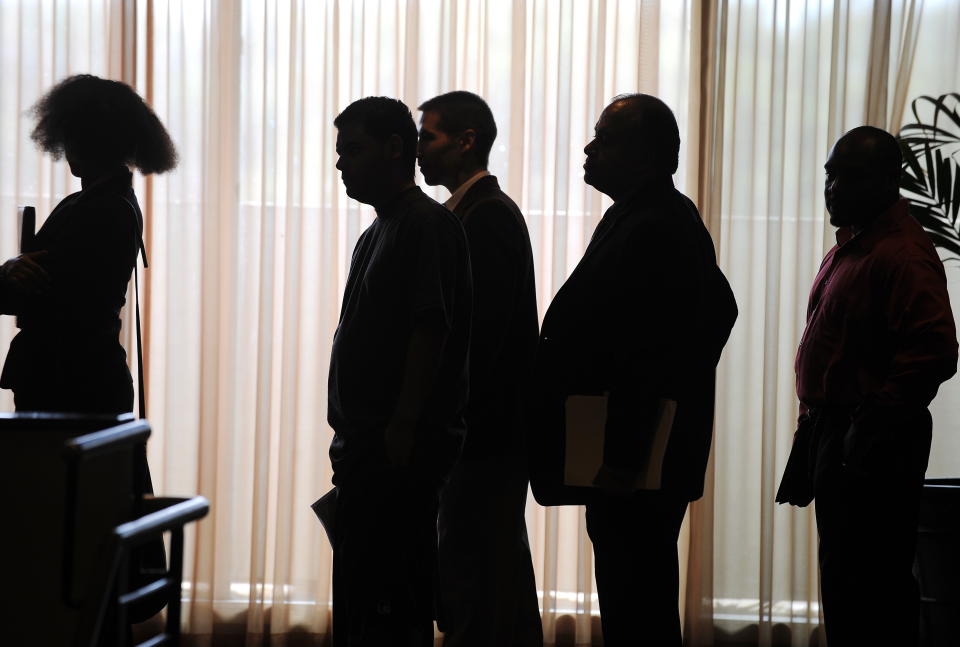NY Fed: Yield curve shows 27% chance of recession in the next year
The Federal Reserve Bank of New York says the flattening yield curve is predicting a 27% chance of a recession in the next 12 months.

Falling Treasury yields are raising questions about whether the market is signaling another coming recession, since inverting yields have had a strong track record of predicting downturns. The yield curve is viewed as a thermometer on market expectations over time and long-term yield at levels below short-term yield signals gloomier outlooks of the future.
A rocky month of trading in December began with the yield on the 5-year Treasury note dipping below the yield on the 3-year note. Although markets have traded up since the new year, the Treasury market continued to flatten and in late March, the yield on the 10-year Treasury fell below the yield on the 3-month Treasury bill as the Fed signaled no more rate hikes for 2019.
Although many market participants generally look at the 2-year and 10-year when evaluating the yield curve, the New York Fed prefers looking at the difference between the 10-year and the 3-month because it shows “accuracy and robustness over long time periods.”

The 10-year has bounced back to regain and slightly widen its spread against the 3-month. But based on the 10-basis-point spread as of April 30, the New York Fed still estimates a 27% chance of a recession within the next 12 months.
For reference, the same model predicted a 35%-40% chance of a recession ahead of the financial crisis in late 2007.
The Cleveland Fed also looks at the 3-month and the 10-year, and predicts a 31% chance of a recession in one year based on the April 26 spread of 15 basis points.
Don’t worry about it?
New York Fed President John Williams has not sounded the alarm on the inverting yield curve. In early April, Williams told reporters that it signals that market participants expect interest rates to be more or less flat.
“It’s not telling us we’re about to have a recession,” Williams said April 11.

Even before the Fed went flat on rates, economists said they would not be surprised to see a recession in the next year. A February survey of 281 business economists showed 10% expecting a recession in 2019 and 41% expecting a recession in 2020. Although the U.S. continues to show signs of steady growth, an economic expansion looking poised to become the longest on record could face pressure from a global slowdown or trade disputes.
Others say there are more important indicators to look at than just the yield curve.
Analysts from Bank of America Merrill Lynch wrote May 6 that when considering the yield curve in a single-variable model, there is a 55% chance of recession given the flatness of rates. But their “multi-variate framework,” which includes payrolls, trade, risk, equity values and trade uncertainty, produces only a 4% chance of a recession.
If anything, Bank of America Merrill Lynch notes that those factors actually show an improving outlook over December, when the same multi-variate model predicted a 55% chance of a recession.
“The Fed's massive monetary policy U-turn in January may have well prevented a recession,” the note reads.
—
Brian Cheung is a reporter covering the banking industry and the intersection of finance and policy for Yahoo Finance. You can follow him on Twitter @bcheungz.
Economist John Taylor: Interest rates should go to around 3%
Powell on the economy: 'We don't see any evidence at all of overheating'
Fed holds rate steady, says inflation is 'running below' its target
Bank CEOs quiet on M&A ambitions as expectations for consolidation build
Bank investors face a 'conundrum' in an inverting yield curve
Congress may have accidentally freed nearly all banks from the Volcker Rule
